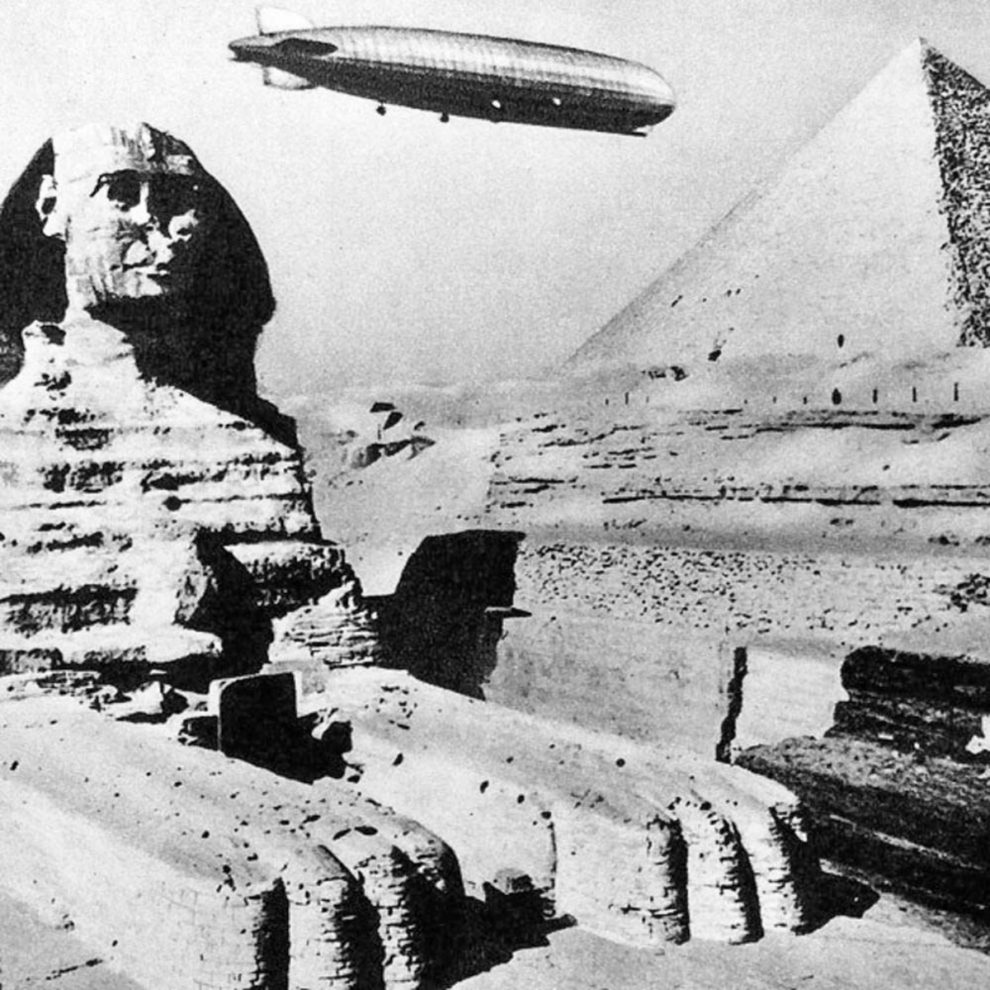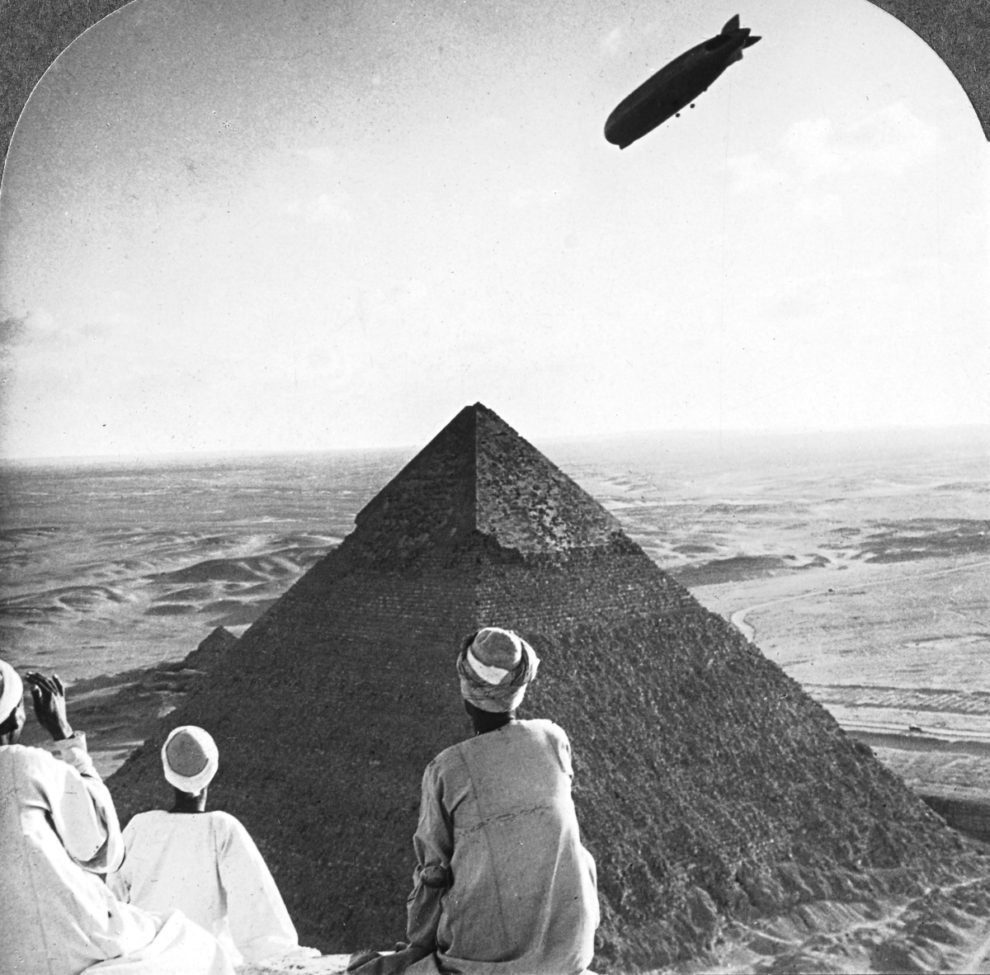Embarking on a Breathtaking Aerial Adventure of of German Zeppelin Airship, Flying Over Giza’s Pyramids in the 1930s
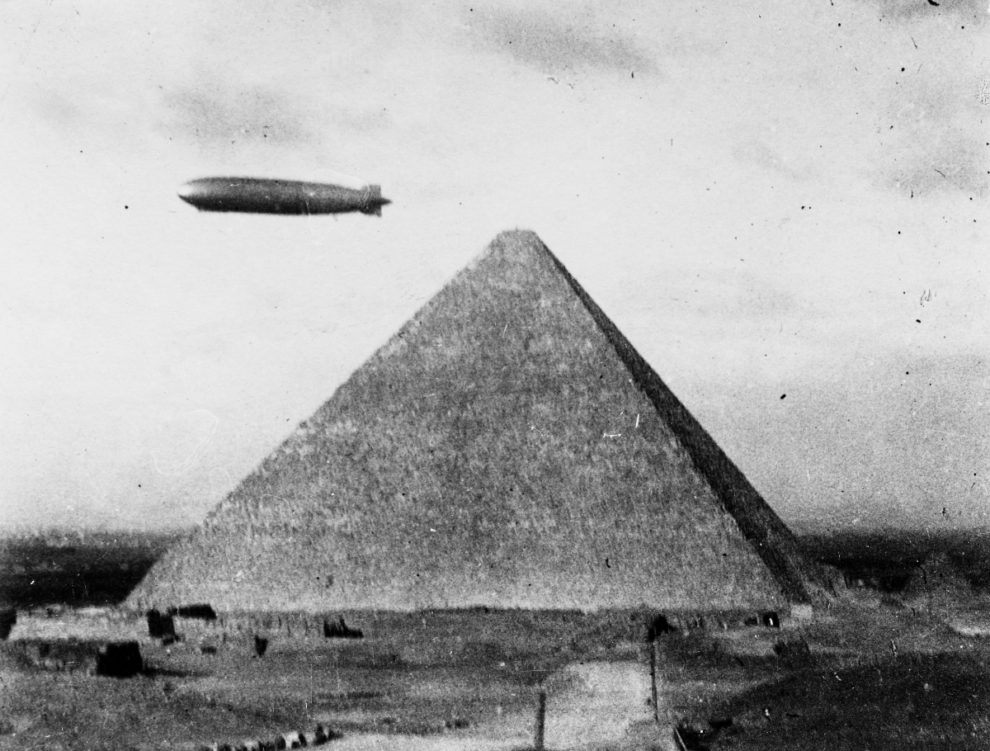
In the realm of aviation during the early 20th century, a magnificent creation emerged from German craftsmanship — LZ 127 Graf Zeppelin. This majestic airship, filled with hydrogen and boasting a rigid structure, gracefully soared through the skies as a passenger carrier. Its operational tenure spanned from 1928 to 1937, leaving an indelible mark on the annals of aeronautics.
h/t: vintag.es
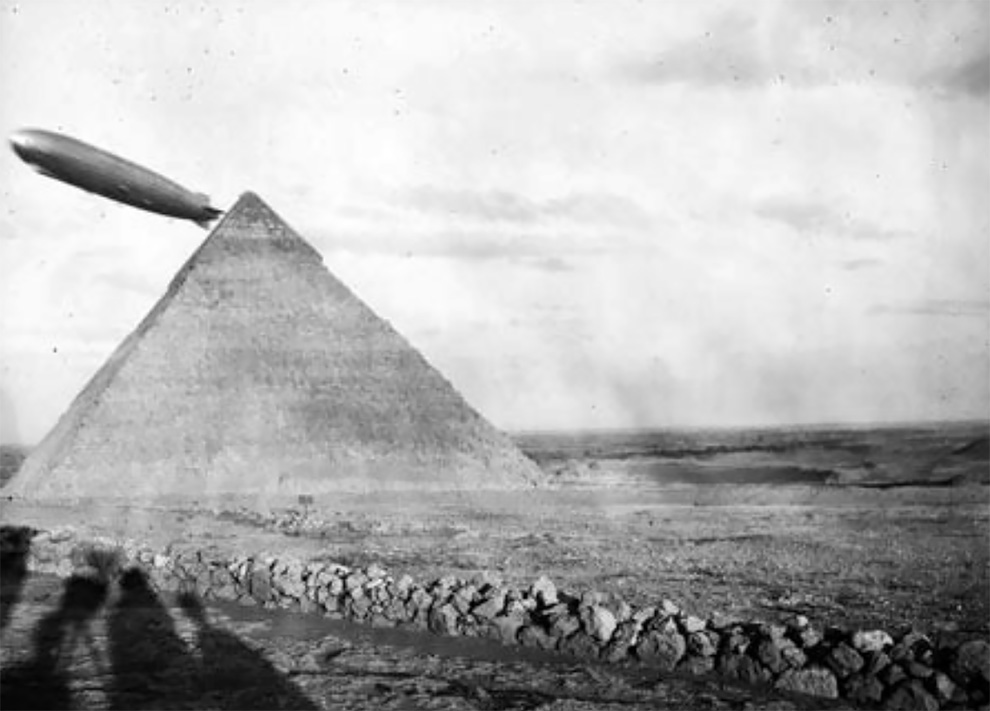
Paying homage to Ferdinand von Zeppelin, a notable count (Graf) in German nobility, the airship was christened by his daughter on July 8, 1928, a fitting tribute to its visionary creator. Initially, from 1928 to 1932, the Graf Zeppelin embarked on a series of experimental and demonstrative endeavors, paving the way for future commercial transatlantic passenger services.
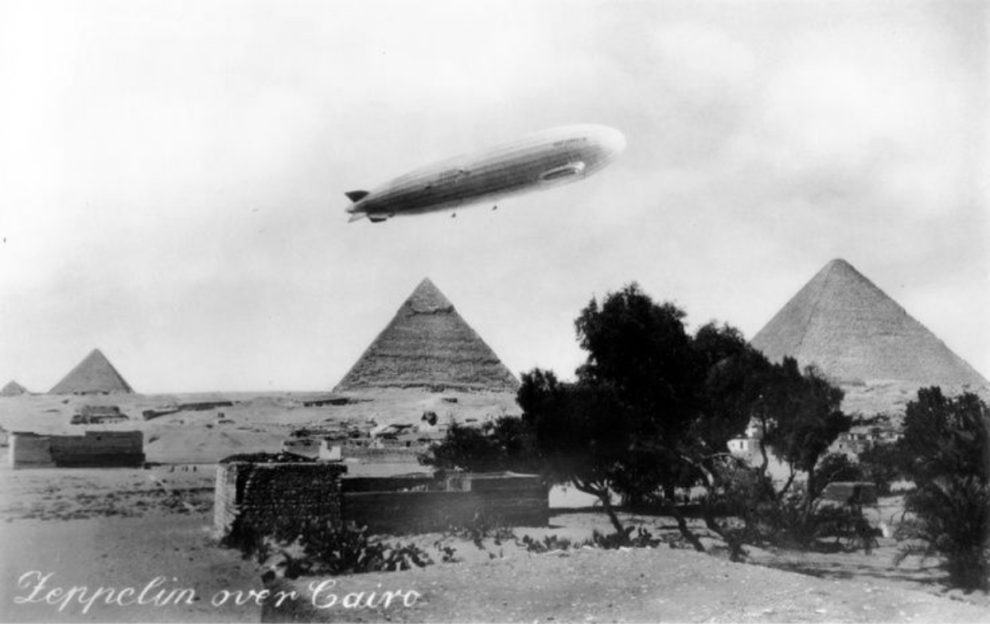
The airship embarked on its inaugural long-distance odyssey in 1928, venturing across the vast Atlantic to reach the shores of the United States. Subsequent demonstration flights showcased its remarkable capabilities, including a momentous circumnavigation of the globe in 1929 and a daring flight from Europe to Pan America in 1930. The Graf Zeppelin also embarked on a polar expedition in 1931 and completed two round trips to the Middle East, in addition to various other European expeditions.
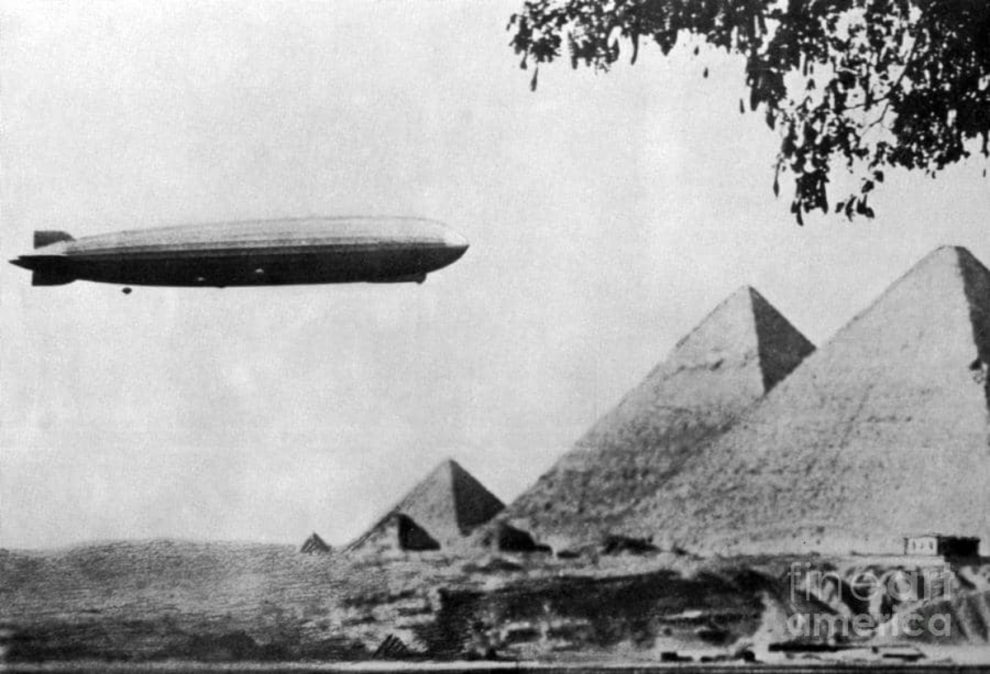
In 1932, the Graf Zeppelin transitioned into a vital role as it commenced regular scheduled operations for passengers, mail, and cargo between Germany and the enchanting landscapes of South America, specifically Brazil. However, tragedy struck on May 7, 1937, with the harrowing loss of the Hindenburg, leading to the abrupt withdrawal of the Graf Zeppelin from active service.
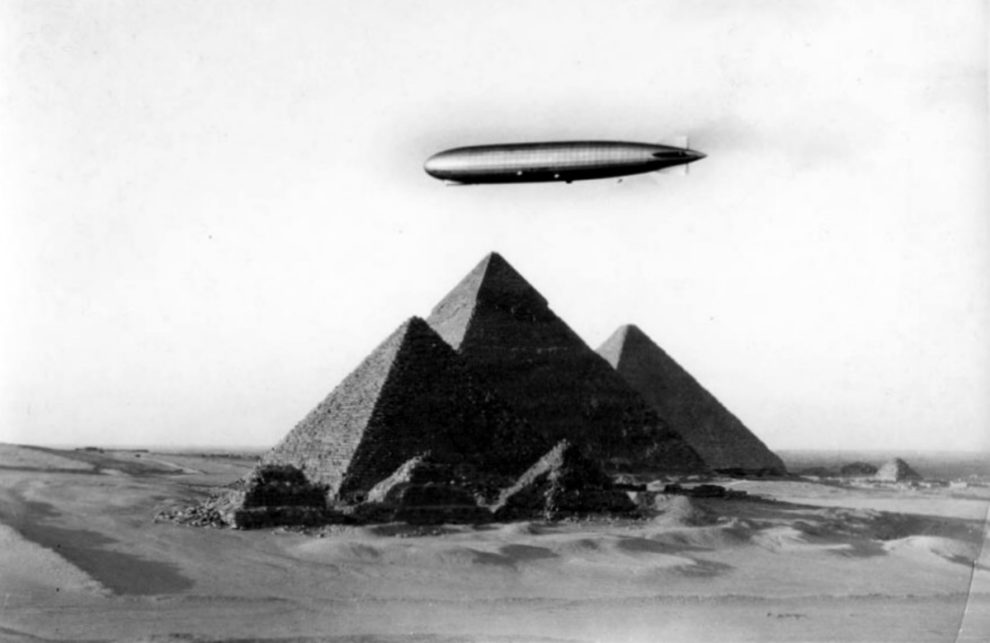
Throughout its illustrious career, the Graf Zeppelin traversed a staggering 1,056,000 miles — an unprecedented feat that secured its place in aviation history as the first-ever aircraft to conquer a million-mile milestone. Encompassing a total of 590 flights and 144 oceanic crossings (143 across the Atlantic and one across the Pacific), the airship carried a remarkable 13,110 passengers without ever causing harm to those aboard. Regrettably, in 1940, the Graf Zeppelin met its demise, succumbing to the dismantling process.

The year 1931 found itself nestled within the interwar period, an epoch marked by global tensions and transitional phases between the cataclysmic events of World War I and World War II. This era witnessed economic instability, societal transformations, and political uncertainty, encapsulating a profound sense of change. The captivating photographs of the Graf Zeppelin gliding serenely over the timeless pyramids serve as a testament to both technological advancements and the undying spirit of exploration that permeated this extraordinary time.
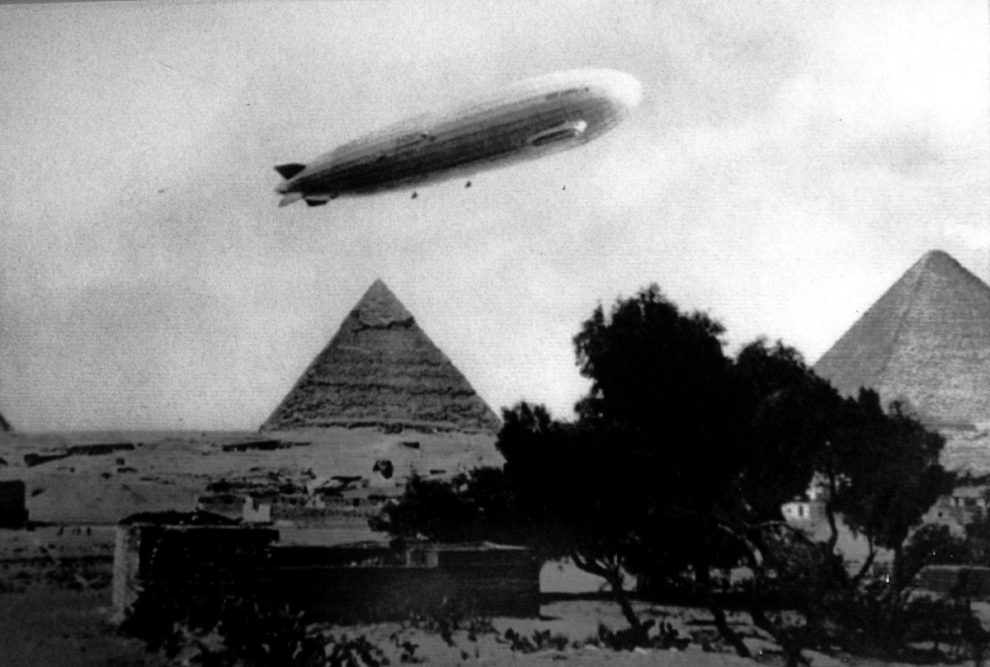
The flight of the Graf Zeppelin above the resplendent Great Pyramids epitomizes the enthrallment with aviation and discovery that pulsated through the veins of the early 20th century. It was an age that birthed groundbreaking achievements in airborne innovation, captivating the collective imagination with its magnificent airships and airplanes. For the Egyptian onlookers who bore witness to this spectacle, the sight of an airship gracefully floating above such an iconic and historically rich location would have undoubtedly evoked sheer awe and wonder.
